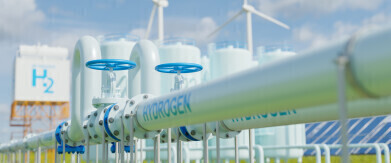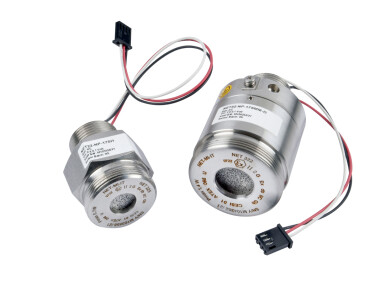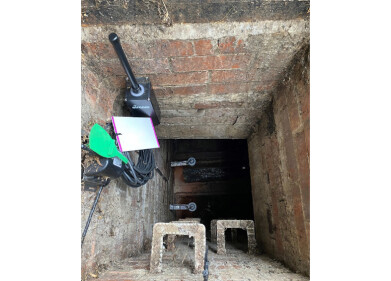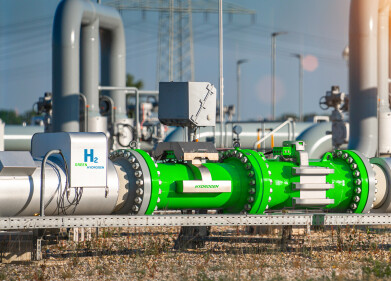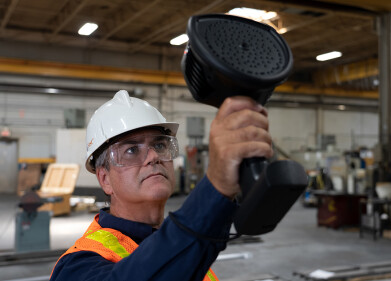Gas detection
Effective ammonia gas detection could make or break decarbonised economies
Nov 10 2023
The emergence of a decarbonized economy hinges not just on the adoption of zero-emission energy sources but also on the technologies that can ensure their safe and efficient use. In this transition, the next generation of ammonia gas detection plays a critical role, particularly as ammonia is positioned as a potential hydrogen storage medium. As we move away from fossil fuels, renewables remain at the centre of decarbonisation, but hydrogen will be needed to fill in the gaps. It promises a clean alternative for industrial combustion processes and a flexible, efficient option for electricity generation through fuel cells as unlike batteries that continue to face limitations in scalability and environmental impact, hydrogen can be stored and transported over long distances. However, these applications remain challenging, due to the need for extreme compression on account of the element’s low volumetric energy density at room temperatures.
Enter ammonia. Whilst ammonia can be liquified under milder conditions, it’s not the ideal fuel for direct use due to its incompatibility with most fuel cells as well as the nitrogen oxides with which it pollutes the environment and harms public health when combusted. So, in fuelling the future, hydrogen will be transported and stored as ammonia to save energy, then converted to hydrogen – a process known as ammonia cracking, which is seeing increased efficiency with modern catalytic technologies – at the point of use.
For this reason, then, accurate and sensitive ammonia detection will be increasingly essential as hydrogen continues to assert itself among the core commodities of the future. In such a world, a firm’s ability to detect ammonia gas to determine whether there are any leaks during the cracking process or that pressurisation has failed, for example, could mean the difference between profit and loss. Importantly, too, ammonia poses significant threats to both public and environmental health. Since ammonia can lead to the formation of nitrogen oxides—a significant pollutant—if not handled correctly, its monitoring becomes a part of the emission control strategy in industries pivoting towards greener practices.
So, what sort of instruments will be needed for these applications? Any instrument selected would need high sensitivity to detect even trace amounts of ammonia, fast response times for real-time monitoring, and robustness to withstand various environmental conditions. Electrochemical sensors provide precise measurements of ammonia concentrations and are known for their long-term stability and low power requirements, making them suitable for continuous monitoring. Photoacoustic infrared detectors offer high sensitivity and specificity to ammonia, allowing for selective measurement even in the presence of other gases. With the capacity to detect lower levels of ammonia, semiconductor sensors are ideal for safety applications, albeit with a need for regular calibration due to potential sensitivity drift over time. Tuneable diode laser absorption spectroscopy (TDLAS) is a highly selective and sensitive method that can measure low concentrations of ammonia across long distances, which is particularly useful for detecting leaks in large-scale hydrogen storage facilities.
Given these roles, next-generation ammonia gas detection is not merely a technical requirement, but a keystone in the architecture of a decarbonized modern economy. It enables the practical use of hydrogen, guarantees environmental protection, and supports the shift to sustainable industrial practices. As we advance, the integration of sophisticated ammonia detection instruments with digital technologies for data analysis and remote monitoring will further enhance the safety and efficiency of this crucial element in our energy transition.
Digital Edition
AET 28.4 Oct/Nov 2024
November 2024
Gas Detection - Go from lagging to leading: why investment in gas detection makes sense Air Monitoring - Swirl and vortex meters will aid green hydrogen production - Beyond the Stack: Emi...
View all digital editions
Events
Jan 20 2025 San Diego, CA, USA
Carrefour des Gestions Locales de L'eau
Jan 22 2025 Rennes, France
Safety, Health & Wellbeing LIVE
Jan 22 2025 Manchester, UK
Jan 25 2025 San Diego, CA, USA
Jan 29 2025 Tokyo, Japan
